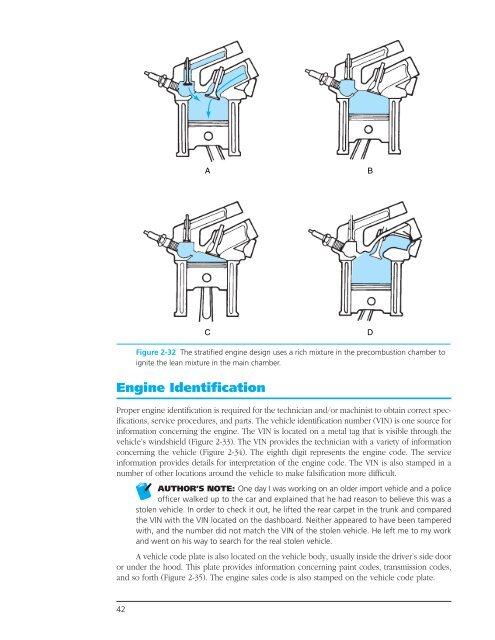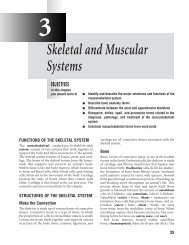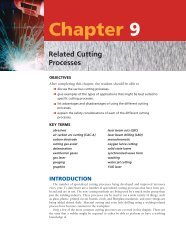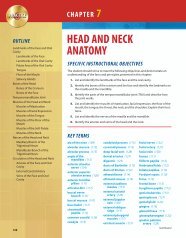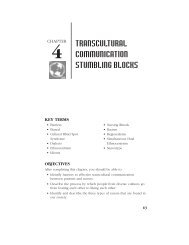Theory of Engine Operation - Delmar Learning
Theory of Engine Operation - Delmar Learning
Theory of Engine Operation - Delmar Learning
You also want an ePaper? Increase the reach of your titles
YUMPU automatically turns print PDFs into web optimized ePapers that Google loves.
<strong>Engine</strong> Identification<br />
Proper engine identification is required for the technician and/or machinist to obtain correct specifications,<br />
service procedures, and parts. The vehicle identification number (VIN) is one source for<br />
information concerning the engine. The VIN is located on a metal tag that is visible through the<br />
vehicle’s windshield (Figure 2-33). The VIN provides the technician with a variety <strong>of</strong> information<br />
concerning the vehicle (Figure 2-34). The eighth digit represents the engine code. The service<br />
information provides details for interpretation <strong>of</strong> the engine code. The VIN is also stamped in a<br />
number <strong>of</strong> other locations around the vehicle to make falsification more difficult.<br />
AUTHOR’S NOTE: One day I was working on an older import vehicle and a police<br />
<strong>of</strong>ficer walked up to the car and explained that he had reason to believe this was a<br />
stolen vehicle. In order to check it out, he lifted the rear carpet in the trunk and compared<br />
the VIN with the VIN located on the dashboard. Neither appeared to have been tampered<br />
with, and the number did not match the VIN <strong>of</strong> the stolen vehicle. He left me to my work<br />
and went on his way to search for the real stolen vehicle.<br />
A vehicle code plate is also located on the vehicle body, usually inside the driver’s side door<br />
or under the hood. This plate provides information concerning paint codes, transmission codes,<br />
and so forth (Figure 2-35). The engine sales code is also stamped on the vehicle code plate.<br />
42<br />
A B<br />
C D<br />
Figure 2-32 The stratified engine design uses a rich mixture in the precombustion chamber to<br />
ignite the lean mixture in the main chamber.


